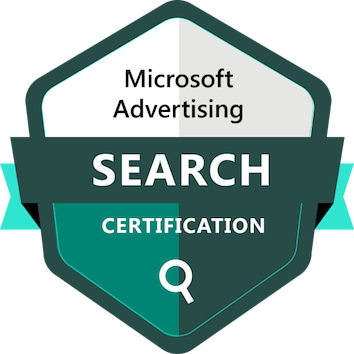In today’s digital landscape, on-page SEO has become increasingly important. It’s essential to make sure your website is properly optimized to maximize its search engine visibility and ranking potential. With that in mind, here is your complete on-page SEO checklist for 2024.
What is On-Page SEO?
On-Page SEO is a crucial aspect of digital marketing that involves optimizing individual web pages to rank higher and earn more relevant traffic through search engines. This process focuses on elements that are directly controlled by the website owner and can have a significant impact on search engine rankings. This includes optimizing content, meta tags, page speed, mobile-friendliness, and other on-page elements to ensure that search engines can properly understand and index the content. With a well-executed on-page SEO strategy, businesses can improve their online presence and better serve their target audience.
What Are the Benefits of On-Page SEO?
In 2024, on-page SEO has become increasingly important in optimizing websites for user experience, search intent, and page loading speed. By focusing on these key elements, websites can benefit from higher search engine rankings and increased organic search traffic.
On-page SEO is crucial in helping search engines understand and rank website content effectively. By optimizing title tags, meta descriptions, and headings with relevant keywords, search engines can better understand the context and relevance of the content. This, in turn, contributes to higher rankings and drives organic search traffic to the website.
Title Tags for SEO
Title tags are an essential element for search engine optimization (SEO) as they directly impact a website’s visibility and ranking in search engine results. When writing title tags, it’s important to carefully consider the content and structure to effectively communicate the topic of the web page to both search engines and potential visitors. We will discuss the importance of title tags, best practices for writing them, and how they can contribute to the overall success of an SEO strategy.
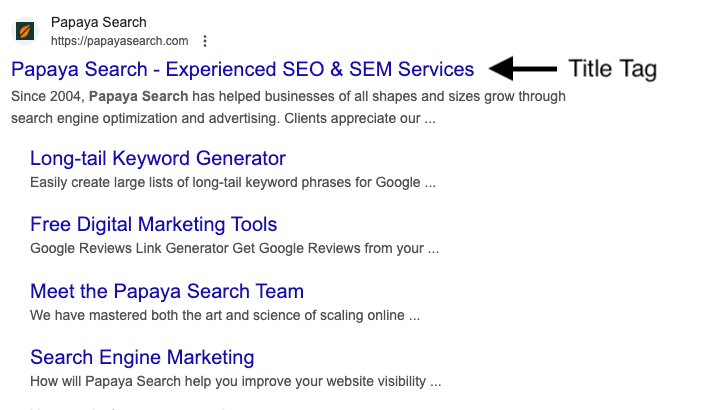
Importance of Title Tags:
Title tags play a crucial role in determining the relevance of a web page to search queries. They are displayed as clickable headlines in search engine results and also appear as the title of a webpage in a browser tab. When crafted correctly, title tags can attract users to click on the link, resulting in increased traffic to the website. Additionally, search engines use title tags to understand the content of a page and rank it accordingly, making them a key factor in SEO.
Best Practices for Writing Title Tags:
There are several best practices to keep in mind when writing title tags. These include using relevant keywords, keeping the title tag within the recommended length (we’ve found keeping title tags around 60 characters works best, but there is no actual exact number), and creating unique and descriptive titles for each page. By following these best practices, websites can improve their visibility in search results and attract more organic traffic.
Title Tags and SEO Strategy:
Incorporating effective title tags into an overall SEO strategy can greatly impact a website’s online presence. Implementing well-crafted title tags can lead to higher click-through rates, improved search engine ranking, and ultimately contribute to the success of an SEO campaign. Understanding the relationship between title tags and SEO is crucial for optimizing a website’s performance in search results.
Keyword Optimization in Title Tags
Keyword optimization in title tags is crucial for on-page SEO as it directly impacts search visibility and click-through rates. Title tags are one of the most important on-page elements for search engines to understand the content of a webpage, making it essential to include primary keywords. By including relevant keywords in the title tag, you can signal to search engines what the page is about and improve its chances of ranking for those particular keywords.
To easily optimize title tags, WordPress users can utilize various SEO plugins like Yoast, SEOPress, or All In One SEO. These powerful tools allow you to easily input and optimize your title tags for target keywords, providing instant feedback and suggestions for improvement. With Yoast SEO, you can ensure that your title tags are not only optimized for search engines but also optimized for user readability. This helps in creating compelling and relevant titles that attract clicks from search engine results pages.
Keyword optimization in title tags is a critical aspect of on-page SEO. By including target keywords in your title tags and utilizing tools like the Yoast SEO plugin for WordPress, you can greatly improve your search visibility and attract more organic traffic to your website.
The Length of Your Title Tag
The length of your title tag is a crucial aspect of on-page SEO. It is recommended to keep the entire title tag around 60 characters to ensure that it is fully displayed in search engine results. A title tag that exceeds this limit may be cut off, leading to a loss of valuable information for users.
The title tag length also has a direct impact on click-through rates. A concise and relevant title tag that accurately depicts the page’s content can improve visibility in search results, as search engines prioritize titles that are clear and concise. Additionally, a well-crafted title tag can entice users to click on the link, ultimately increasing the click-through rate. If your title tag is too long, it will be cut off in the search results. If it is too short, it won’t accurately describe the page.
In conclusion, the length of your title tag plays a crucial role in on-page SEO, search engine visibility, and click-through rate. By following best practices and keeping the title tag concise, relevant, and under 60 characters, you can effectively optimize your website’s title tags for better search visibility and user engagement.
Craft an Effective Meta Description Tag
Meta description tags are an essential part of on-page SEO, as they provide a summary of a webpage’s content. When crafting an effective meta description tag, it’s important to keep it within the recommended 150-160 character limit to ensure it’s displayed properly in search engine results. The tag should be concise, compelling, and accurately reflect the content of the page, as it can greatly impact click-through rates.
Including relevant keywords in the meta description can help improve the page’s visibility and relevancy in search results. Meta descriptions also allow you to speak directly to potential customers through the SERPs. You can include call-to-actions, highlight special deals, or let potential customers know about the benefits of clicking your link.
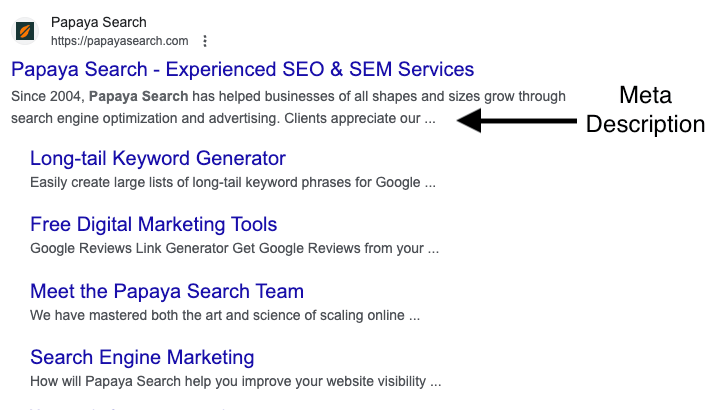
Using a tool like Yoast SEO for WordPress can be an easy and effective way to optimize your meta description tags for better click-through rates. With Yoast SEO, you can easily customize and write unique meta descriptions for each page of your website to help it stand out in the SERP. Additionally, Yoast can automate the process of writing meta descriptions, so you never have to worry about any page not having an optimized meta description.
Write Eye-Catching Headers and Sub-headers
To create eye-catching and organized content, it is important to utilize subheadings and header tags effectively. Subheadings break up text and improve the overall user experience by making it easier for readers to scan for information. Additionally, including keywords in header tags can improve the on-page SEO of the content.
When using header tags, it is essential to follow a nested hierarchy system, starting with H2 as the main headings and using H3, H4, and so on as subheadings within each section. This hierarchy not only helps in organizing the content but also signals the importance of the keywords to search engines.
By implementing heading tags strategically, you can have a significant impact on on-page SEO as search engines prioritize content with clear and relevant headers. This makes it crucial to use heading tags to highlight the main sections & sub-sections of the content, incorporating relevant keywords to attract the right audience.
Utilizing subheadings and header tags effectively is crucial for creating well-structured and SEO-friendly content that enhances the overall user experience.
Including Relevant Keywords in Content
To improve search engine optimization and increase visibility online, it is essential to include relevant keywords in the body of your content. By strategically incorporating these primary keywords into your writing, you can enhance the overall quality and relevance of your content, making it more likely to rank higher in search engine results. In this section, we will discuss the importance of including relevant keywords in your content body, as well as some tips and best practices for effectively integrating keywords into your writing. Whether you’re creating website copy, blog posts, or any other type of content, understanding how to use keywords naturally and effectively is crucial for driving organic traffic to your site and reaching your target audience.
Utilizing Internal Links and External Links
Internal & external links play a crucial role in guiding website visitors to related content, improving user experience and increasing SEO rankings. Strategically placing internal links & external links within content helps users discover more relevant information & keep them engaged.
Internal Links
Internal links are links that point to other pages on your site. They are an essential part of any successful on-page SEO strategy, providing important context to search engine crawlers and making your website easier to navigate for users. When using internal links, it’s important to use keyword-rich anchor text to provide context and relevance to the linked page. This helps search engines understand the content and improves the likelihood of ranking for those keywords.
External Links
External links to authoritative sources also add value to your content, establishing credibility and trust with your audience. By linking to reputable sources, you provide additional information and resources for your readers, which can enhance user experience and demonstrate expertise in your niche.
Broken Links
When it comes to on-page SEO, an important thing to check for is broken links. Broken links can hurt your website’s overall SEO performance, as they create a poor user experience and can also lead to duplicate content issues. It’s essential to make sure that all of the links on your web pages are working properly and directing users to the right place.
Image Optimization with Alt Texts
Image optimization with alt texts is crucial for improving SEO and making web content accessible to people using assistive technology. When adding alt texts to images, it’s important to be descriptive and concise, providing a brief and accurate description of the image. This not only helps search engines understand the content of the image but also provides important context for users who rely on screen readers or alternative text browsers.
Including relevant keywords in alt texts can further improve SEO by providing search engines with additional information about the content of the webpage. It’s important to choose keywords that are relevant to the web page’s content and to incorporate them naturally into the alt text.
Creating an Optimized URL Structure
To create a search engine-friendly URL structure, start by using descriptive and simple keywords that accurately reflect the content of the page. Include a keyword that is relevant to the content and will help with rankings and click-through rates. Use hyphens to separate words in the URL, as search engines prefer this format for readability.
Reflect the hierarchy of your content in the URL structure, using subfolders to organize different sections of your website.
- If you have a blog, the URL for a post about SEO-friendly URLs could be: yourwebsite.com/blog/seo-friendly-blog-urls.
- If you have products on your website, your URLs could be: yourwebsite.com/products/seo-friendly-product-url.
Consistency is key to providing a superior user experience, so maintain a cohesive system throughout your website. This means using the same structure and keyword inclusion for all your URLs and avoiding any unnecessary parameters or symbols.
Mobile Friendliness
In today’s digital age, it is crucial to ensure that a website or blog is mobile-friendly and has a responsive design. With nearly everyone using mobile devices to access the internet, having a mobile-friendly website is no longer just a bonus – it’s a necessity. Google has made mobile-friendliness a ranking factor, meaning that websites that are not mobile-friendly may not rank as high in search results.
To familiarize yourself with Google’s mobile-first indexing approach, it is essential to visit Google Search Central, where you can find valuable information on best practices for mobile optimization. Implementing these best practices is crucial for boosting on-page SEO and user experience, as it can directly impact how a website or blog ranks in search results and how users interact with it. By ensuring mobile-friendliness and responsive design, you can provide a seamless user experience regardless of the device being used, ultimately driving more traffic and engagement to your website or blog. Taking these steps is vital to staying competitive in the digital landscape.
If you are wondering how mobile-friendly your site currently is, you can test your website using Google’s Lighthouse tool. This tool can be accessed in Google Chrome by pressing the F12 key. This tool will scan your site and provide a ton of useful data, mobile-friendliness included.
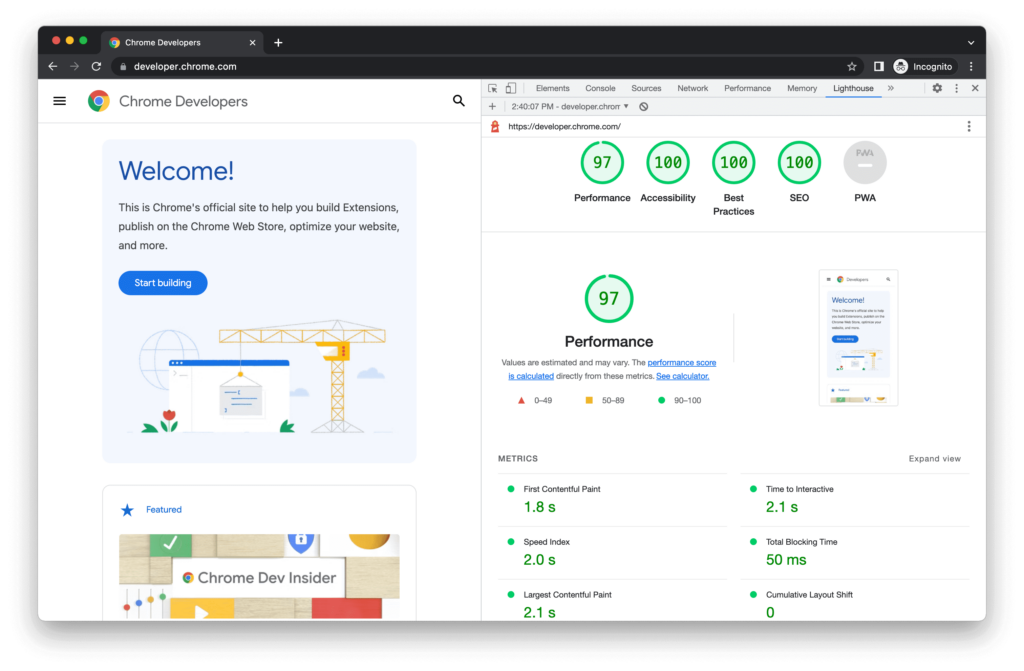
Site Speed and Load Times
To monitor your site speed and improve load times, start by using PageSpeed Insights and Google’s site audit tool. These tools will provide a detailed analysis of your website’s performance, including metrics such as first contentful paint (FCP), speed index, and time to interactive (TTI). Utilize the results to identify areas for improvement and prioritize which aspects to focus on.
Consider implementing a content delivery network (CDN) to distribute your website’s content across multiple servers worldwide, reducing the distance between the user and the server. This can significantly improve load times, especially for users located far from your primary server location. Additionally, consider deleting any unused plugins or third-party scripts, as they can also impact load times.
By regularly monitoring your site’s performance using PageSpeed Insights, and addressing the identified areas for improvement, you can effectively optimize your website’s speed and improve the overall user experience.
Schema Markup (Structured Data) for SEO
Schema markup is crucial for SEO as it provides a structured way for search engines to understand and interpret website content. It helps search engines display more informative and visually appealing search results through enhanced SERP features. One common type of schema markup is Organization Schema, which allows businesses to provide details such as their name, logo, and contact information to search engines. Local Business Schema is another popular type, which helps local businesses appear in localized search results by providing location-specific information. Person Schema is used to highlight individual profiles, while Article Schema is designed to provide specific details about articles, such as the headline, date published, and author information. Using these types of schema markup can greatly improve a website’s visibility and relevance in search engine results.
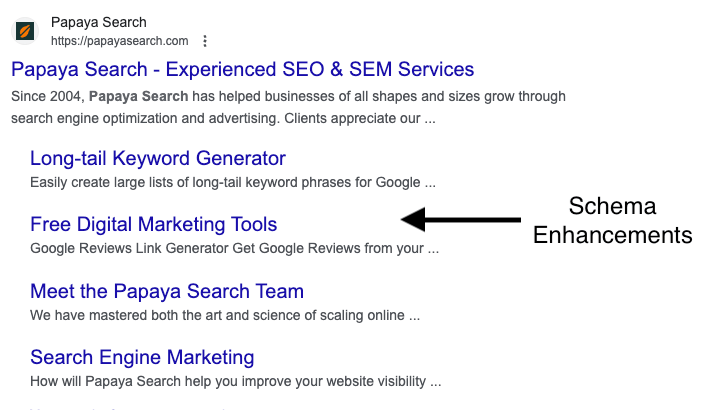
Common types of Schema markup:
- Organization
- Local Business
- Article
- Person
- AggregateRating
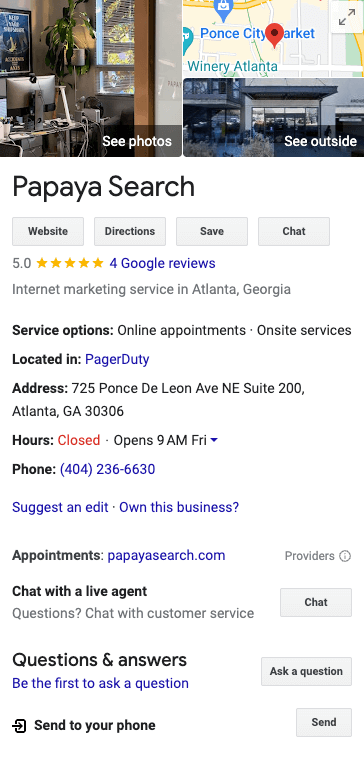
All in all, implementing schema markup and structured data is essential for improving SEO performance, as it helps search engines better understand the content of a website.
Implementing these techniques, including effective title tags, link usage and schema markup, is crucial for enhancing search visibility and user experience. By following these guidelines, websites can achieve improved search engine rankings and attract more organic traffic, effectively boosting their online presence in a competitive digital landscape.
We can help you craft an SEO strategy that includes on-page SEO optimization. Papaya Search has over 20 years of combined experience crafting SEO strategies to increase online visibility, become a trusted resource, & attract more leads.






